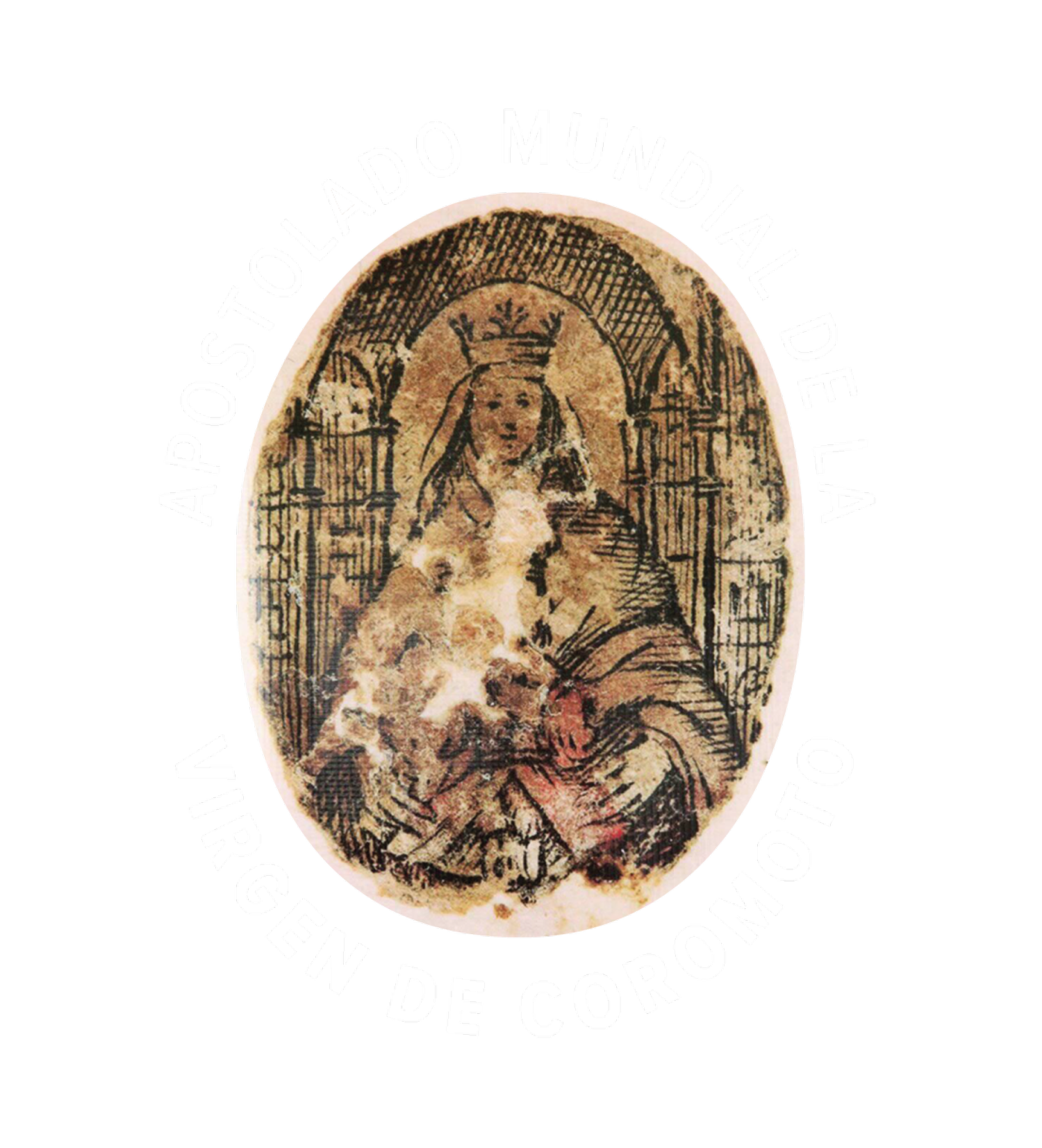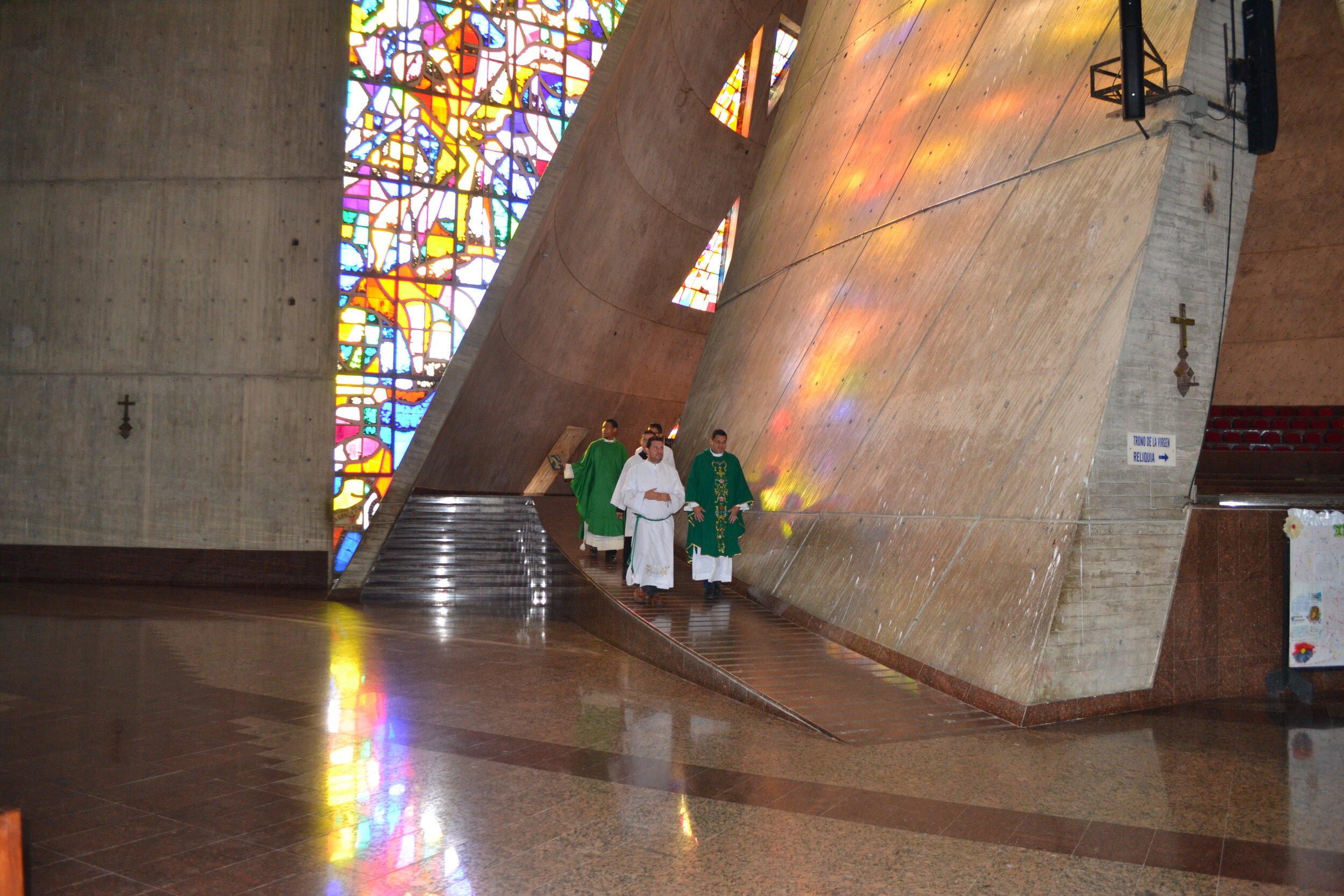
Basilicas
There are 2 Minor Basilicas for the Virgin of Coromoto
THE NATIONAL SANCTUARY, BASILICA MINOR OF OUR LADY OF COROMOTO
The Sanctuary is built on the site of the second apparition of the Virgin to the Indian Coromoto. In 1975 Monsignor Angel Polacini, Bishop of Guanare invited the Congregation of the Servants of the Blessed Sacrament to build the Retreat House "La Bella Señora", which they gladly accepted and a group of them took the initiative to take to Rome the proposal to create a Votive Temple in the place of the second apparition of the Virgin when she left her image in the hand of the cacique.
In Rome they accepted the initiative and thus began the construction project elaborated by the Spanish architect Juan Capdevila Elías and the Venezuelan architect Erasmo Calvani in 1975. Work began in early 1980.
The work was interrupted on several occasions, due to the fact that the economic resources from the Vatican did not arrive smoothly. With the impulse of Monsignor Alfonso de Jesús Alfonzo Vaz and the Servants of the Blessed Sacrament together with a group of lay followers of the Virgin of Coromoto, started an initiative to carry out a fundraising campaign which they called "El Bolívar Coromotano" (The Coromotan Bolivar). The idea was that if there were twenty-six million people and each one gave one Bolivar, the Temple could be built. With the devotion and generosity of many people, despite the setbacks, the work was completed and on January 7, 1996, the Venezuelan Episcopate consecrated the Votive Temple.
On February 10, 1996, in his second visit to Venezuela, Pope John Paul II inaugurated it with a Mass together with the entire Venezuelan episcopate, many priests and more than two million faithful followers.
The Votive Temple began to be called National Shrine. On October 20, 1997 Pope Benedict XVI elevated it to Minor Basilica.
The National Shrine, a Minor Basilica, is slightly smaller than St. Peter's Basilica in the Vatican. It seats about 2,500 people inside the Basilica, and can hold more than 50,000 people in the Plaza de Espigas. On the outskirts of the Basilica, there is a viewpoint where you can see the Andes Mountains and the plains, looking to the right you can see a little of the city of Guanare, you can reach this viewpoint through an elevator or if you prefer by stairs.
In the interior of the Basilica there are three altars, one in each lateral nave and in the center the main altar where the Episcopal Chair is located. Behind the main altar is the Throne of the Virgin where the Image of the Virgin of Coromoto that appeared to the Indian Coromoto on September 8, 1652 can be observed. This image is the one that materialized in the cacique's hand when he wanted to catch her in order to kill her. The cacique had nothing in his hands. Therefore, what she leaves him is totally from heaven. The material of which the image is made is unknown, it is a type of unknown fiber that is under study.
In the altar located in the right lateral nave there is a fountain in which the scene of the moment of the apparition of the Virgin to the Indian Coromoto is observed and on this altar there is a luminarium where there is an image of the Virgin of Coromoto that was made of Bronze where candles can be placed, you can arrive to this Velatorio through stairs. In the altar located in the left side nave is the Chapel of the Blessed Sacrament and on this altar we can see a replica of the image of the Virgin of Guadalupe and on the High Altar you can see an image of the Virgin of Coromoto, as well as the flags of the Vatican City and Venezuela.
Underneath the Basilica there is a Museum dedicated to the Virgin of Coromoto where the priestly vestments that His Holiness John Paul II used during his visit to this Basilica in 1996 to inaugurate it are also kept.
On the outskirts of the National Sanctuary Basilica Menor, there are seven artificial lagoons that serve as a mirror for the Basilica when viewed from the observatory.
This National Shrine Basilica Menor is considered the second most modern and important Basilica after the Basilica of Our Lady of Guadalupe in Mexico City and followed by the Basilica of Our Lady of Aparecida in Brazil.
HOW TO GET TO THE NATIONAL SANCTUARY
The National Sanctuary Basilica of Our Lady of Coromoto is located 25 kilometers from the city of Guanare, to get there you must take the highway José Antonio Paez and exit at the distributor that will take you to the town Quebrada de la Virgen and from there just 15 minutes away you will find the National Sanctuary of Our Lady of Coromoto.
Coordinates:
Latitude: 8 ° 55'24.7 "N.
Longitude: 69 ° 46'23.3 "W
MINOR BASILICA CATHEDRAL OF GUANARE
It is an 18th century church consecrated to the Virgin of Coromoto, located in Guanare, capital of the State of Portuguesa, in Venezuela.
The first temple of certain importance in Guanare began in 1710 and was completed by Presbyter Francisco Valenzuela in 1742.
This church did not last long, since it was damaged by the earthquake of October 15, 1782 and had to be closed. The reconstruction work began in 1788 and finished on November 3, 1807.
It was elevated to the dignity of Minor Basilica on May 24, 1949, by His Holiness Pope Pius XII, and declared historical monument according to Official Gazette Nº 36.320 of August 2, 1960. The altarpiece, baroque-colonial of churrigueresque style, was made by José Quiñones, as well as the stained glass windows made by FX Zettler in Munich.
HOW TO GET TO THE GUANARE CATHEDRAL
Virtual Tour of the National Sanctuary of Our Lady of Coromoto:
http://www.santuariobasilicacoromoto.com/tour-virtual-santuario-nacional-virgen-coromoto.html#
Official website of the Cathedral of Guanare:
http://www.santuariobasilicacoromoto.com/historia-catedral-guanare.html
Virtual tour in the Cathedral of Guanare:
http://www.santuariobasilicacoromoto.com/tour-virtual-catedral-guanare.html










































































